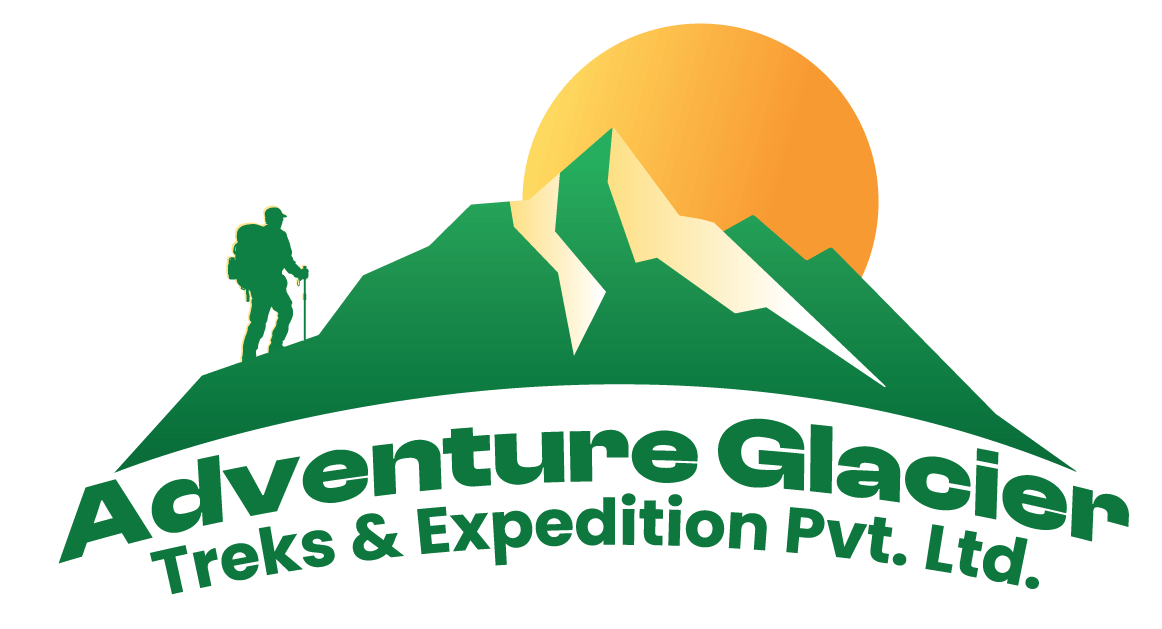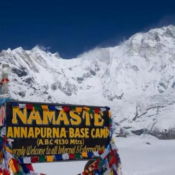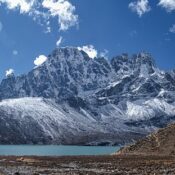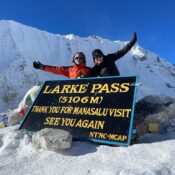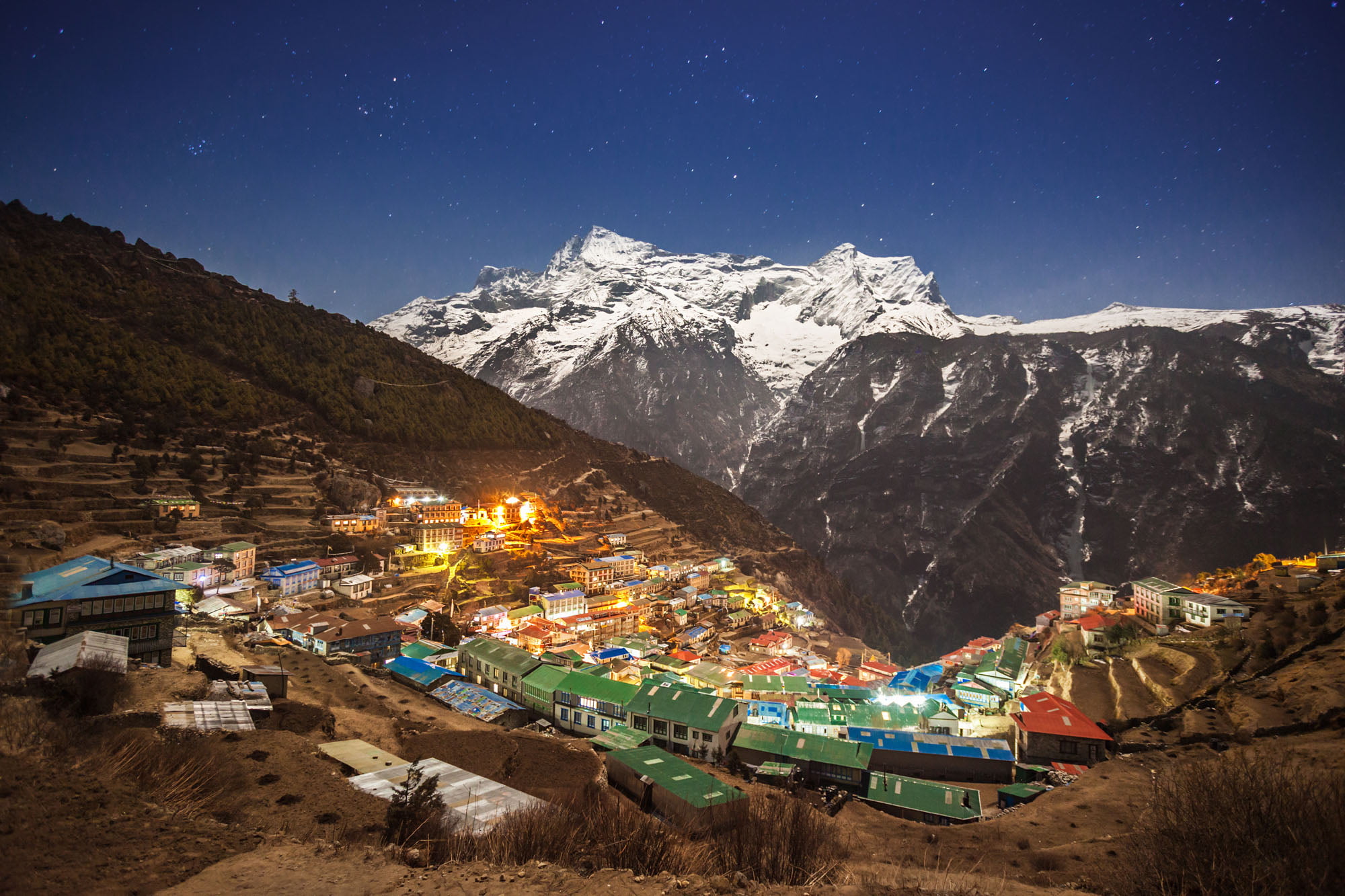Everest Base Camp Trek Food Guide: What To Eat, Avoid, and Pack
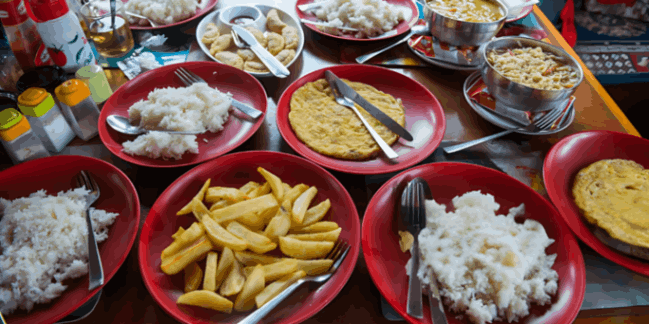
Managing your diet and nutrition is key when you’re preparing for a physically demanding and high-altitude journey like the Everest Base Camp trek. It’s not just about what meals are available along the way; it’s about making informed choices to keep your energy up, stay healthy, and avoid problems that can come from improper eating or dehydration.
At high altitudes, digestion and hydration become even more important. Some foods and drinks are easier for your body to process, while others can make you feel uncomfortable, slow your recovery, or affect your overall performance. Knowing which foods support your energy and stamina, which ones to avoid to prevent illness or digestive issues, and which snacks or supplements are best to carry can make a big difference. Paying attention to hygiene, food safety, and proper hydration is also crucial, as these factors can significantly affect your health and wellbeing in challenging environments.
You might be wondering; What types of food help you maintain energy and stay hydrated, Which foods could cause problems at high altitudes, How can the snacks and items you pack complement your meals along the way. Understanding these points helps you plan your diet effectively, make safe choices, and pack the right items before you head out. Knowing how to eat wisely, avoid risks, and prepare smartly from home makes a big difference throughout your journey.
1. Foods Available on the Everest Base Camp Trek
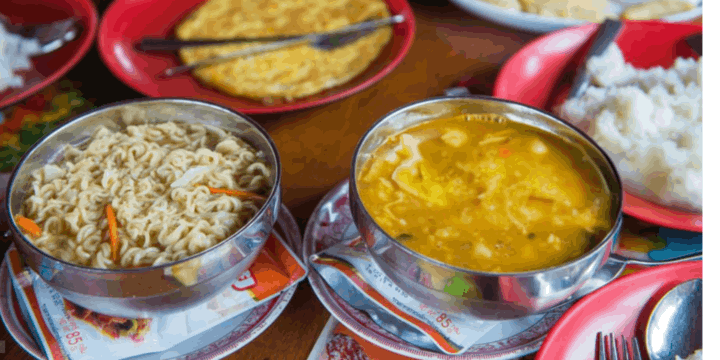
You'll find that the food available at teahouses and lodges is simple but designed to keep you fueled and energized, when you are on the Everest Base Camp Trek. While the variety isn’t huge, the meals are filling, warm, and easy to digest, which is exactly what your body needs at high altitude.
- Dal Bhat: This is the classic Nepalese meal you’ll see everywhere. It gives you lots of energy and keeps you full for a long time. Many places even let you have extra, so it’s filling and easy on the pocket.
- Tibetan Bread: A crispy bread you usually have for breakfast. It’s great for a quick energy boost to kick-start your day.
- Momos: Nepali dumplings that are soft, tasty, and perfect when you need a little snack, as it gives you energy and is super satisfying.
- Thukpa: A warm noodle soup with veggies or meat. Light and easy to eat, it keeps you going and warms you up.
- Porridge and Oatmeal: A healthy breakfast choice that keeps you full and gives steady energy. You might get it with nuts, honey, or dried fruits to make it even better.
- Chapati and Omelet: Simple but strong on energy, a good way to start your day with both protein and carbs.
- Yak Cheese and Yak Meat: Local cheese and meat that give you long-lasting energy. Perfect if you want to try traditional flavors and stay strong.
- Rice, Pasta, and Potatoes: Carbs that keep you going. These dishes are filling and help you maintain your energy throughout the day.
- Soups (Garlic, Tomato, Lentil): Light soups to warm you up and help with hydration. Garlic soup is even thought to help your body adjust better at high altitudes.
- Chocolate and Energy Bars: Quick snacks you can munch on anytime you feel hungry. Great for a fast energy boost between meals.
2. Foods to Avoid During the Everest Base Camp Trek
When you’re at high altitude, like on the Everest Base Camp trek, it’s important to be careful about what you eat and drink. Some foods can make you feel tired, sick, or uncomfortable. Here’s what to avoid:
- Caffeine: Coffee, strong tea, or energy drinks can dehydrate you and make it harder to sleep. Good rest is important to help your body adjust to high altitude.
- Alcohol: Alcohol increases fluid loss, which can cause dehydration. Being dehydrated can make altitude sickness worse, so it’s best to skip alcohol entirely.
- Meat: Fresh meat can be hard to store safely at high altitudes, so it’s better to avoid it. Plant-based protein like lentils, beans, or eggs is safer and easier to digest.
- Processed and Junk Foods: Chips, instant noodles, and other processed snacks don’t give much nutrition. They can make you feel sluggish and tired. Stick to healthier options that keep your energy steady.
- Carbonated Drinks: Soda or fizzy drinks can cause bloating and gas, which feels uncomfortable when you’re walking or climbing. Water, herbal tea, and electrolyte drinks are better choices to stay hydrated.
3. Best Drinks for Hydration
Staying hydrated is one of the most important things you can do on the Everest Base Camp trek. The higher you go, the drier the air gets, and your body loses water faster without you even realizing it. The trick is to drink small amounts often instead of finishing a big bottle at once. Also, avoid too much coffee or alcohol, as they dehydrate you instead of helping. Here are some of the best drinks to keep you hydrated:
- Warm Water: Plain boiled water is your safest and most reliable option. Tea houses usually provide boiled water for a small cost.
- Herbal Tea: Ginger, mint, or lemon tea are soothing and help with digestion, it also keeps you warm on cold nights.
- Hot Lemon with Honey: It's a refreshing and energy-boosting drink, which provides you a natural sugar boost while keeping you warm.
- Butter Tea: It is a traditional Tibetan tea made with yak butter, which provides warmth and energy. It has a salty taste but is highly beneficial.
- Electrolyte Drinks: Powder packs or tablets can be added to your water to replace minerals you lose while trekking.
- ORS (Oral Rehydration Solution): A must if you feel weak or dehydrated, as it restores salts and energy quickly.
- Soups and Broths: Warm, salty soups keep you hydrated and also help with acclimatization since they encourage you to drink more fluids.
4. Snacks and Energy-Boosting Foods
Carrying some snacks is always a good idea. When you feel tired or low on energy, a quick bite can really help. Things like nuts, dried fruits, energy bars, and chocolate are perfect because they’re easy to pack and give you a boost. You can also bring ORS or electrolyte powder to add to your water for proper hydration. It keeps your body fresh and helps you recover faster.
- Energy Bars and Protein Bars: Super handy for quick energy when you feel tired on the trail.
- Nuts (almonds, cashews, peanuts, walnuts): Give long-lasting energy and are very easy to carry.
- Dried Fruits (raisins, apricots, dates, figs): Light, sweet, and give a fast energy boost.
- Dark Chocolate: Great for instant energy and also lifts your mood when you feel low.
- Trail Mix: A mix of nuts, seeds, and dried fruits that’s perfect for snacking anytime.
- Electrolyte Powder or ORS: Keeps you hydrated and helps with tiredness or headache.
- Instant Noodles or Soup Packets: Can be useful for a warm and filling snack in the evenings.
- Cheese Slices or Cubes: A bit heavy but gives protein and strength if you carry some.
5. Famous Sherpa Foods on the Everest Base Camp Trek
During the Everest Base Camp trek, besides energy boosting foods, you’ll get to taste some unique Sherpa foods that are deeply tied to their culture and traditions.. These meals give energy and help people stay strong in the cold and high-altitude areas. Eating Sherpa foods also shows a bit of their culture and how they live in the mountains.
- Sherpa Stew (Thukpa): A thick noodle soup with vegetables and sometimes yak meat. It’s a warming comfort food after long walking days.
- Shyakpa: A hearty Sherpa soup made with handmade noodles, vegetables, and meat. It feels more like a stew and is very filling.
- Riki Kur: Sherpa potato pancakes, usually served with yak butter or cheese, simple but delicious.
- Yak Butter Tea (Su Chya): A salty tea made with yak butter and milk. It might taste unusual at first but keeps you warm and gives energy.
- Chhurpi: Traditional hard cheese made from yak milk. Locals chew on it slowly, and it lasts a long time.
- Tsampa: Roasted barley flour mixed with tea or milk, eaten as a staple food in high-altitude areas.
- Yak Meat Dishes: From yak steak to yak curry, this is a common source of protein in the mountains.
6. Types of Tea During Everest Base Camp Trek
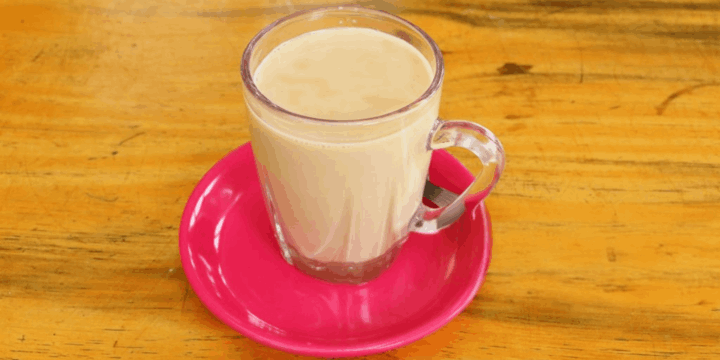
On the Everest Base Camp route, tea is a big part of daily life after food. You’ll find many kinds, each offering warmth, comfort, and a small energy boost, it not only helps you stay hydrated but also keeps you feeling cozy in the cold. Drinking tea is a daily routine for locals and visitors, and it’s a great way to relax and recharge between meals or during rest breaks.
- Milk Tea: A simple black tea mixed with milk, sweet and comforting, perfect for warming up.
- Black Tea: Strong and light, good for hydration without too much heaviness.
- Lemon Tea: Refreshing and helps with sore throats, also keeps you hydrated.
- Ginger Tea: Popular for keeping the body warm and easing altitude headaches.
- Green Tea: Light and healthy, good for digestion and staying fresh.
- Honey Tea: A soothing drink that gives natural energy and helps with coughs.
- Sherpa Butter Tea: Made with yak butter and salt, strong in taste but keeps you warm and full of energy.
7. Avoid Coffee & Other Alcoholic Drinks
Too much coffee or alcohol can dehydrate your body and make it harder to sleep, which is important at high altitude. Alcohol can also increase the risk of altitude sickness and reduce your energy. It’s best to stick to water, herbal tea, Ginger Tea, or electrolyte drinks to stay strong and hydrated.
- Black Coffee: Too much can dehydrate you and make it harder to sleep, which is important for adjusting to high altitude.
- Milk Coffee: Adds some calories but still contains caffeine, which can affect hydration and sleep.
- Beer: Alcohol increases fluid loss, which can worsen dehydration and make altitude sickness more likely.
- Hard Drinks (Rum, Whiskey, Wine, Vodka, Raksi, Mustang Coffee): Strong drinks can slow your recovery, reduce energy, and increase the risk of altitude sickness.
8. Vegetarian and Vegan Options
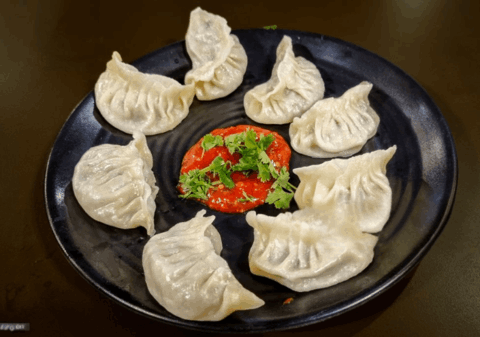
If you follow a vegetarian or vegan diet, you’ll still have plenty of choices. Many meals can be prepared without animal products, ghee, or dairy, and some options are even gluten-free. With a little planning, you can stay well-fed, energized, and healthy. Carrying some snacks or energy-boosting foods also helps ensure you always have safe options, especially at higher altitudes where choices may be limited. Many places serve:
- Dal Bhat (Vegan Option): Rice with lentils and vegetables. Skip ghee or butter to make it fully vegan.
- Vegetable Noodles & Fried Rice: Made without eggs or animal products. Easy to digest and energy-boosting.
- Momo (Vegetable, Vegan Option): Dumplings made with vegetables, no butter or cheese.
- Soups (Vegan & Gluten-Free Options): Vegetable, tomato, or lentil soups, warming and hydrating.
- Lentils, Beans & Tofu: Excellent plant-based protein without any animal products.
- Nuts & Dried Fruits: Lightweight, nutritious snacks suitable for vegan and gluten-free diets.
- Energy Bars (Vegan & Gluten-Free): Convenient for a quick boost, made without animal ingredients or gluten.
Should You Bring Your Own Food for the Everest Base Camp Trek?
Yes, it’s a good idea to bring some of your own food with you. While most places have plenty of meals, the options can get repetitive, and higher up, there are fewer choices. Having your favorite snacks or energy bars ensures you always have something you like and that your body can digest easily. Even though food is available along the way, prices go up as you go higher because everything has to be carried up. Bringing a few lightweight snacks can really help, giving you extra energy and variety. Here are some good options to pack:
- Energy and Protein Bars: Quick and easy snacks that give an energy boost. Look for bars with nuts, oats, or natural sugars for longer-lasting energy.
- Nuts and Dried Fruits: Small, lightweight, and packed with nutrients. They give healthy fats and protein to keep your energy steady.
- Electrolyte Powder and ORS: Helps replace lost minerals and prevents dehydration. Important for keeping your energy up and avoiding altitude sickness.
- Instant Noodles and Soups: Handy for a quick meal when options are limited. They can supplement meals at higher elevations.
- Tea Bags and Coffee Sachets: Bring your favorite flavors. Tea houses offer hot drinks, but having your own lets you enjoy the taste you like and can save a bit of money.
- Dark Chocolate: Gives instant energy and helps fight fatigue. It’s also a nice little mood booster during the day.
Packing Food for Everest Base Camp Trek
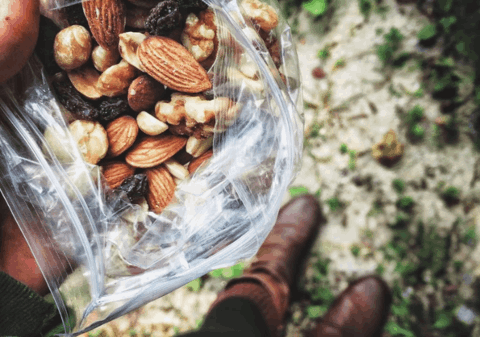
Packing some of your own food is smart, especially for snacks and energy-boosting items. While meals are available along the way, carrying lightweight, nutritious food ensures you always have something you like and can eat safely. Packing your own food also helps you save money since meals at higher altitudes can be expensive. Keeping a few snacks handy in your daypack makes it easier to eat small amounts often, which is better for energy and digestion. Preparing your food thoughtfully ensures you stay fueled, healthy, and ready for each day.
- Energy Bars and Protein Bars: Quick energy when you feel tired
- Nuts and Dried Fruits: Lightweight, nutritious, and long-lasting
- Dark Chocolate: Instant energy and a little mood boost
- Instant Soups and Noodles: Warm meals when you need something easy
- Electrolyte Powder or ORS: Helps prevent dehydration and maintain energy
- Tea Bags and Coffee Sachets: Bring your favorite flavors for comfort
- Avoid Spoilable Foods: Skip meat, dairy, or anything that can go bad easily
- Daypack Snacks: Keep small snacks handy for frequent, quick bites
Food Allergies and Intolerances
If you have food allergies or intolerances, it’s very important to pay attention to what you eat, especially in places where meals are prepared differently from what you are used to. Many dishes may contain common allergens like dairy, eggs, gluten, nuts, or soy, even in meals that seem simple. It’s always a good idea to ask about the ingredients before you start eating. Don’t be shy to check with the staff at tea houses or lodges, they are usually understanding and can help you choose a safer option.
Carrying your own allergy-friendly snacks is also a smart move. Things like nuts (if safe), dried fruits, energy bars, or gluten-free treats can be very useful when options are limited, especially at higher altitudes where food variety is smaller. You can also prepare a small note in Nepali or show an allergy card to explain your needs clearly to the cooks.
Being prepared helps you avoid reactions that could make you sick or weak, which is especially important in demanding conditions. Staying safe with your diet ensures that you can maintain energy, enjoy your meals, and feel comfortable throughout your journey. Planning ahead for allergies or intolerances can make your experience much smoother and stress-free.
Conclusion
Food is more than just fuel, it’s your energy, comfort, and support during challenging days. Eating well helps you stay strong, recover faster, and feel better, especially in high-altitude and cold conditions. Knowing what foods to eat, what to avoid, and what to pack gives you more control over your energy and health. Small choices, like carrying snacks, drinking plenty of water, and selecting meals that digest easily, can make a big difference in how you feel each day.
Being mindful of allergies, intolerances, or dietary preferences is also important. Preparing ahead by packing safe snacks or labeling your needs ensures you can eat without stress and avoid discomfort. Drinks like tea, herbal blends, and electrolytes are equally essential for hydration and maintaining stamina. Avoiding caffeine and alcohol helps prevent dehydration and supports better acclimatization.
Understanding local foods, like Sherpa dishes, and knowing what vegetarian, vegan, or gluten-free options are available allows you to enjoy your meals while staying healthy. Planning your food carefully gives you confidence that you can stay energized, comfortable, and well-nourished throughout the journey. With the right approach to eating and drinking, you’ll have the strength and stamina to make the most of every day. For making your journey even more smoother, safer, and enjoyable contact Adventure Glacier Treks.
FAQs for Everest Base Camp Trek Food Guide: What to Eat, Avoid, and Pack
What do you eat on the Everest Base Camp trek?
You can enjoy simple, filling meals like dal bhat, noodles, fried rice, momos, soups, porridge, and pancakes. Snacks like nuts, dried fruits, chocolate, and energy bars help between meals. Hot drinks like tea, coffee, or butter tea keep you warm and energized.
What do I need to pack for Everest Base Camp?
Packing some food from home is a smart idea. Bring energy bars, nuts, dried fruits, dark chocolate, instant soups, tea bags, coffee sachets, and electrolyte powder. These snacks are lightweight, easy to carry, and give a quick energy boost. Avoid foods that spoil easily, like fresh meat or dairy. Having your own snacks ensures you always have something safe and familiar to eat, especially on longer or higher-altitude days.
How much is food on Everest Base Camp Trek?
Food gets more expensive at higher altitudes because it is carried by porters or yaks. Lower villages are cheaper. Meals may cost $5–$10, while snacks and drinks can be $2–$5. Bringing your own snacks helps save money and ensures you have something familiar to eat.
How do people get food on Everest?
Food is carried up by porters, yaks, or mules, as vehicles can’t reach most villages. Tea houses and lodges rely on these deliveries to stock their kitchens. Fresh produce is limited, so many items are dried or frozen. Staple ingredients like rice, lentils, noodles, and potatoes are common. Because of this, meals are simple, filling, and often repeated across villages, but they provide enough energy for long days.
How to drink water on Everest?
Staying hydrated is very important, drink small amounts often instead of a lot at once. Use boiled, filtered, or purified water to stay safe. Electrolyte drinks or ORS help replace lost salts. Warm drinks like tea or soup also keep you hydrated. Avoid too much caffeine or alcohol, which causes dehydration.
What food do you bring to Mount Everest?
Lightweight, nutritious, and easy-to-carry foods work best. Bring energy bars, protein bars, nuts, dried fruits, dark chocolate, instant soups, and noodles. Tea bags, coffee sachets, and electrolyte powders are also useful. These foods provide quick energy and are convenient when options are limited. Packing some snacks ensures you have something familiar and safe to eat, especially on high-altitude days where appetite and digestion may be affected.
What to eat on Everest Base Camp Trek?
Eat simple, high-energy, easy-to-digest foods like rice, noodles, lentils, soups, nuts, dried fruits, and energy bars. Drink plenty of water, herbal tea, or electrolytes. Avoid greasy or unfamiliar foods that upset your stomach. Eat small amounts often to stay strong, hydrated, and comfortable at high altitude.
